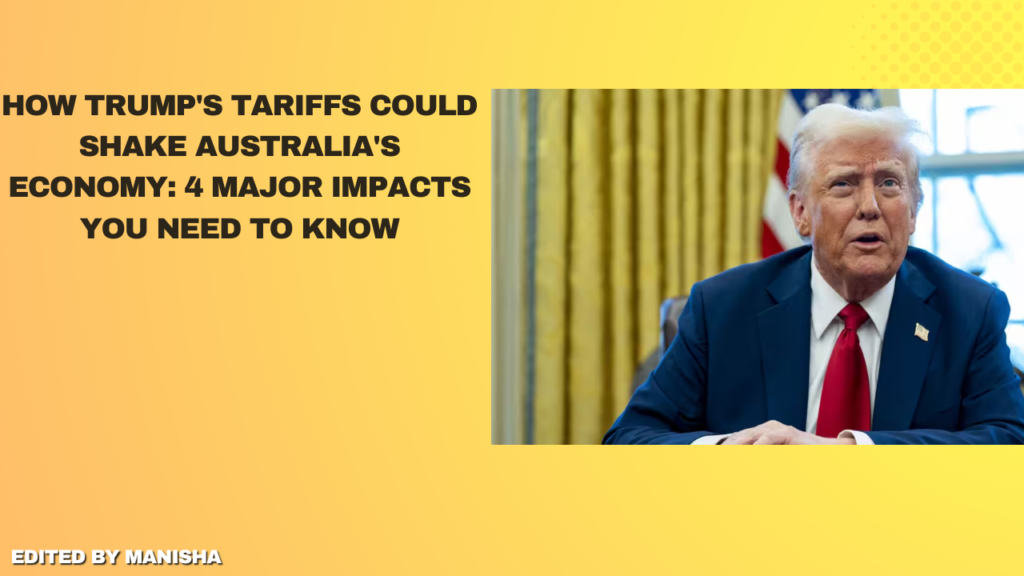
When President Donald Trump took office, he promised that tariffs would make America “rich as hell,” boost manufacturing jobs, and improve the national budget. However, while many economists argue that these tariffs will likely harm the U.S., they are expected to have significant negative effects on Australia as well. Trump’s 10% tariff on all Chinese imports will likely lead to economic hardship in Australia, particularly affecting the nation’s largest exporters, increasing investor uncertainty, and making travel to the U.S. more expensive.
Recently, Trump proposed a 25% tariff on goods from Canada and Mexico, along with the 10% levy on China. Although the tariffs on Canada’s and Mexico’s imports have been temporarily suspended for 30 days, the impact on China is already underway.
In retaliation, China has imposed a 15% tariff on American coal and liquefied natural gas and a 10% tariff on products such as farm machinery, crude oil, and pickup trucks, effective February 10. Additionally, China has initiated an antitrust investigation into Google and implemented export controls on vital minerals like tungsten, tellurium, and ruthenium, which are essential in U.S. industries ranging from tire manufacturing to steel alloy production.
China has also added two American companies—PVH Group, the parent company of brands like Tommy Hilfiger and Calvin Klein, and Illumina Inc., a biotech firm—to its “unreliable entity list,” exposing them to potential penalties or restrictions. Meanwhile, the U.S. Postal Service suspended the acceptance of parcels from China, affecting millions of American consumers awaiting affordable Chinese-made products.
Here are the four major ways Trump’s tariffs on China will impact Australia:
The Australian economy: Australia exported goods and services worth $219 billion to China last year, making it the largest trading partner. In comparison, the U.S. accounted for just $33.6 billion. Any slowdown in China’s economy, whether due to reduced exports to the U.S. or higher costs for American imports, will directly affect Australia. Rabobank’s senior macro strategist, Benjamin Picton, warned that Australia and New Zealand could face significant economic challenges as trade barriers rise, similar to the struggles of the past when protectionism prevailed. A slowdown in China’s economy, induced by tariffs, could prove detrimental to Australia’s growth unless China introduces additional stimulus.
The Australian dollar: Following the U.S. tariffs on China and an increase in American interest rates in 2018, the Australian dollar saw a 13% drop. Trump’s recent tariff announcements have caused the dollar to sink to its lowest value since 2020. While a weaker dollar benefits Australian exporters by making goods cheaper for U.S. buyers, it also drives up the cost of imports to Australia, increasing inflationary pressures. For those planning to visit the U.S., the lower purchasing power of the Australian dollar means that a trip to destinations like Disneyland will be more expensive.
Interest rates: Tariffs are expected to fuel inflation in Australia, which could lead to higher interest rates, impacting those with mortgages. However, if the tariffs significantly slow the economy, the Reserve Bank of Australia may be forced to reduce rates to stimulate growth. Economists, including Warwick McKibbin, a former Reserve Bank board member, have pointed out that Trump’s tariffs could be more damaging to growth than inflation, potentially contributing to a case for a rate cut.
Asset prices: Trump’s tariffs have created market volatility, with the ASX200 hitting an all-time high just before the tariff announcement, followed by a 2.5% drop on the day after the tariffs were revealed. The uncertainty surrounding the tariffs has caused increased fluctuations in the market, and even cryptocurrencies, such as Bitcoin, which had experienced growth, have seen their value nearly reverse following Trump’s announcement. The ongoing uncertainty surrounding future tariff actions will likely continue to affect investor sentiment negatively.
In conclusion, while Trump’s tariffs are designed to protect U.S. industries, they have created economic ripple effects worldwide. Australia is feeling the pinch through slower economic growth, a weaker dollar, potential interest rate hikes, and market instability—all of which contribute to an uncertain financial future.